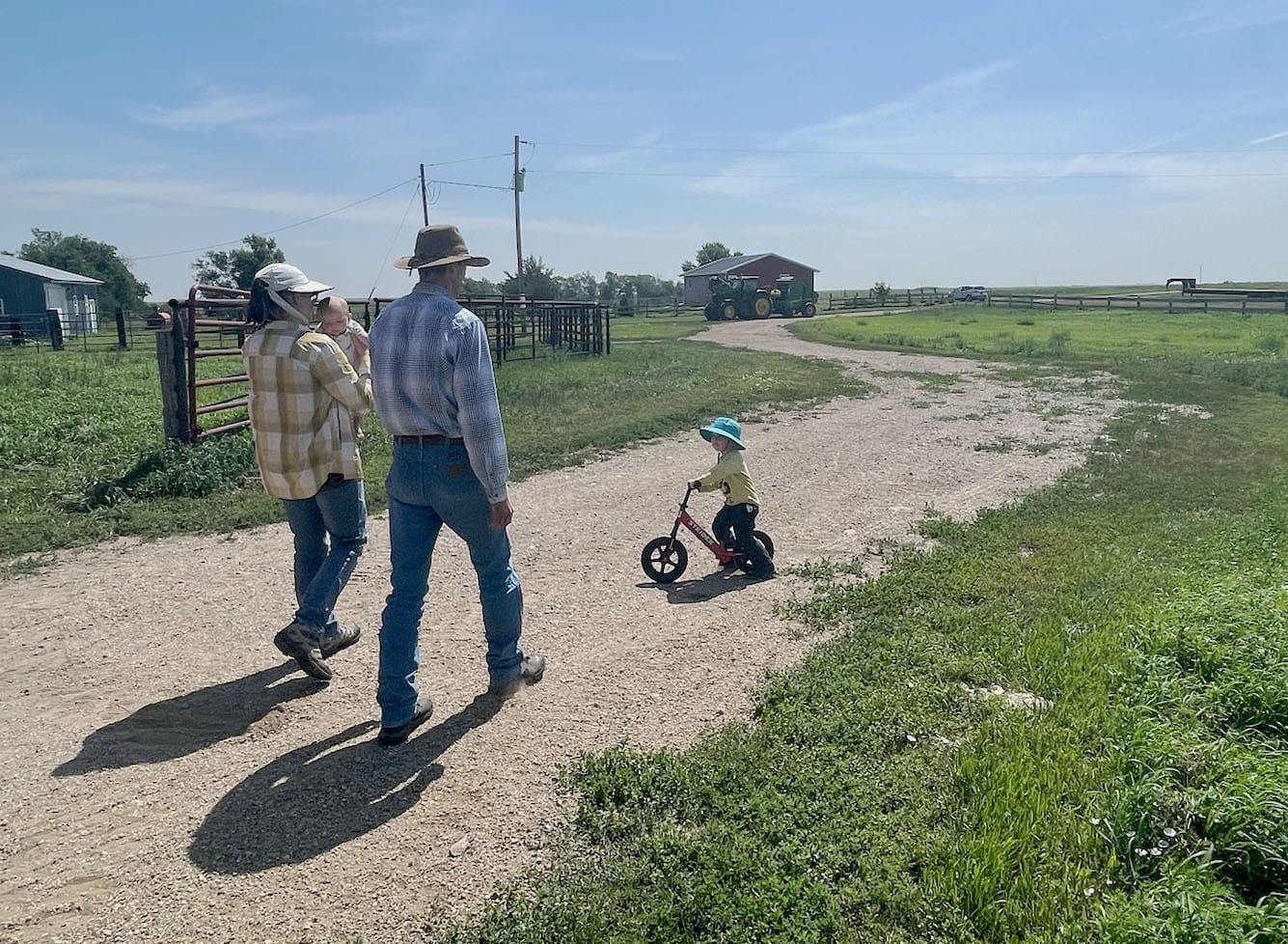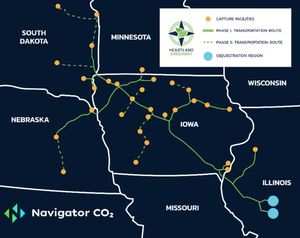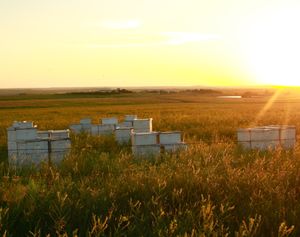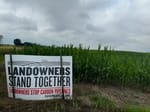HOLABIRD, S.D. – The morning of July 24 arrived with endless blue skies and an equally vast Monday workload for fourth-generation Hyde County cattle rancher Seth Zilverberg.
He and his father, Don, hit the fields to bale alfalfa while the moisture content was right. Too wet and the alfalfa will rot. Too dry and the leaves break off. Then they returned to the north portion of the Bar JZ Ranch near Holabird, where 75-year-old Don resides with his wife, Peg.
Seth, 39, headed to the house to gather his 2-year-old son, Solanus, who emerged carrying a toy tractor and approached Seth’s real-life John Deere with familiarity. That could mean a fifth generation of ranching for the Zilverbergs, who have bucked the trend of dying farms and sinking populations in Hyde County, a rural expanse in central South Dakota framed by the Missouri River at its southwest edge, about 40 miles east of Pierre.
“If early indications mean anything, our son will be all in,” said Seth, a 2002 graduate of Highmore High School. He earned an animal science degree at South Dakota State and returned to raise a family and sell cattle on land purchased by his great-grandfather in 1928.
“The kid loves everything outdoors, the machinery especially.”
That generational pull has become less common in Hyde County, whose population of 1,184 ranks 65th among South Dakota’s 66 counties, with little stabilization in sight.
Hyde lost a higher percentage of population (6%) than any other South Dakota county from 2020-22, and it was one of just four counties (joined by Jerauld, Ziebach and Faulk) to see double-digit percentage declines from 2010-2020, according to the U.S. Census Bureau.
Seth Zilverberg, who uses genomically enhanced breeding to meet the demand for bulls, sees himself as fortunate to carry on a Holabird tradition started by Dutch ancestors nearly a century ago.
More from News Watch: South Dakota population on track to top 1 million by 2030 after ‘significant’ growth
Driving south from Don’s property to Seth’s ranch, where a refurbished red sale barn looms, reveals family-owned operations that were able to maintain a line of succession.
“There are a few places near us that had people living or working there and are now abandoned farmsteads,” said Seth, who married his wife, Bridget, in 2019 and has a 4-month-old daughter, Avila, in addition to his son. “It takes a lot of hard work and a will and desire to keep it going.”
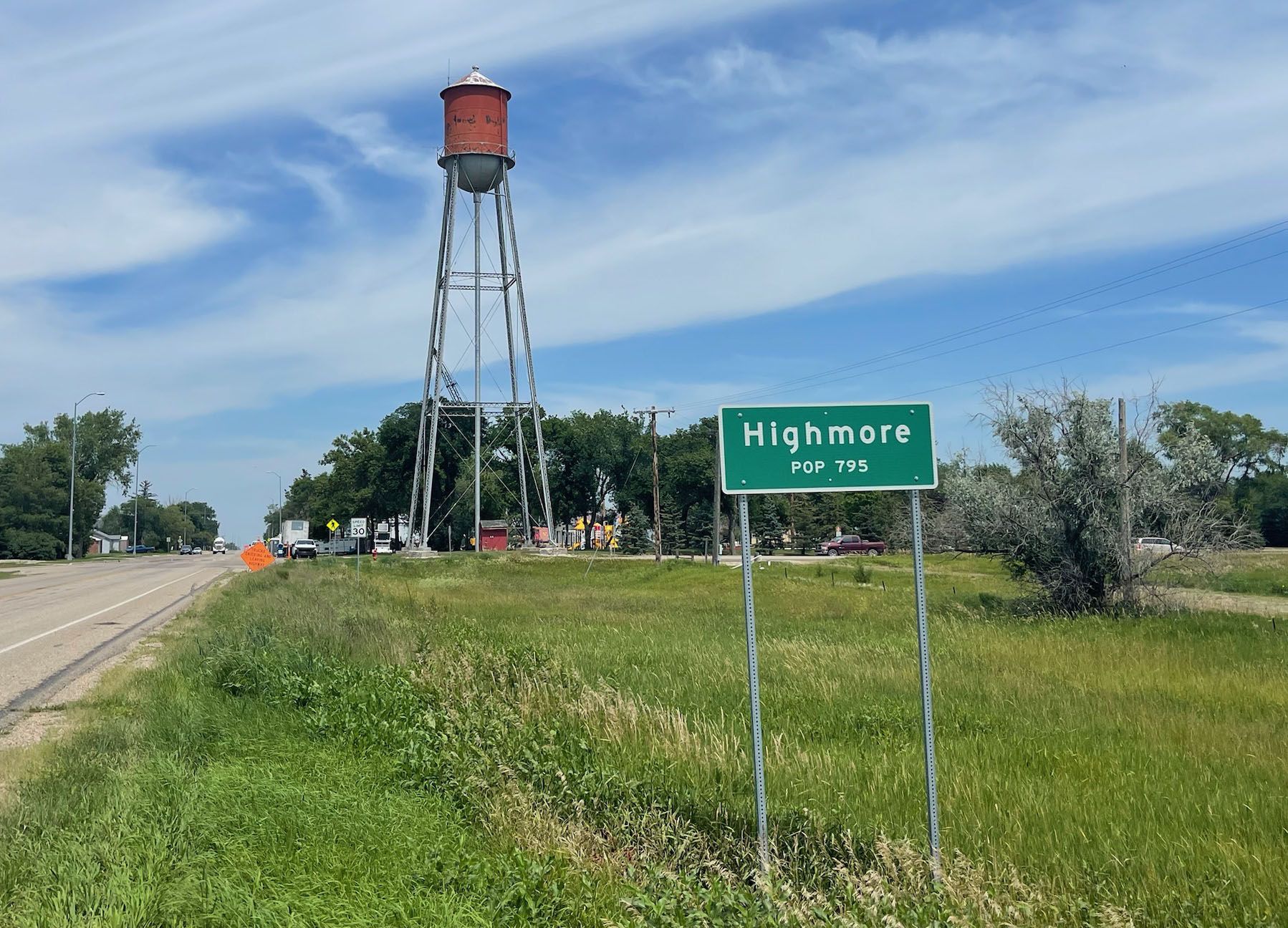
Problems with dwindling population not easily fixed
Reversing population trends in rural counties is a formidable task.
Hyde County has just one organized community, Highmore, a town of 653 residents and so named because it had the highest altitude (1,886 feet) among rail stops from Chicago to the Missouri River.
Highmore made headlines recently as the site where former South Dakota Attorney General Jason Ravnsborg struck and killed pedestrian Joseph Boever while driving on U.S. Highway 14, which led to Ravnsborg’s impeachment and removal from office.
The county’s population has dropped 53% since 1970, when it was 2,515. It has a median age of 46.1, compared with the state median age of 36.9. And the county’s 548 households is down from 679 in 2000, according to Census data.
SDSU professor and state demographer Weiwei Zhang said Hyde County typifies a trend of rural counties getting smaller due to natural change (more deaths than births) and negative net migration as young people look elsewhere for career opportunities.
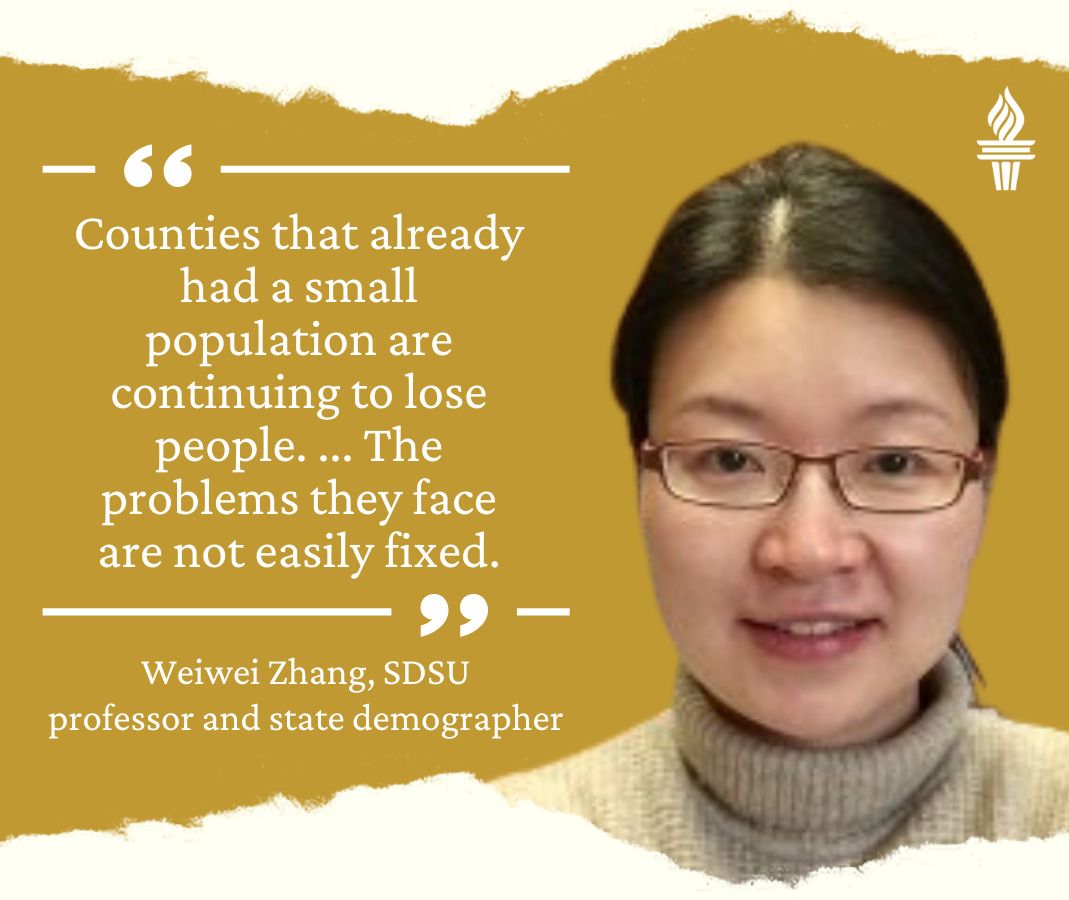
She noted that of counties in South Dakota with fewer than 5,000 residents, 22 of 30 (73%) had population declines from 2010-20, compared to 11 of 27 (41%) for counties greater than 5,000 but less than 20,000. None of the nine South Dakota counties with populations greater than 20,000 saw population declines during that period.
“Of the people that are moving within our state or from other states, most are moving to metro or large counties,” Zhang said. “Counties that already had a small population are continuing to lose people. Many of these places are not only rural, they’re remote and isolated. The problems they face are not easily fixed.”
School district feels pinch from shrinking enrollment
Quinton Cermak, superintendent of the Highmore-Harrold School District, took a break from office duties July 24 to show a visitor the farm-framed field where he played football as a high schooler on the south edge of Highmore.
A tornado cut through town in 2016, damaging the bleachers and crows’ nest. But it wasn’t Mother Nature that left the football field dark and empty on fall Friday nights. It was a shortage of available players, which came close to ending Highmore-Harrold’s football program in August 2015.

“It was too close for comfort,” said Cermak, a 1996 Highmore High grad and former football coach who became superintendent in 2016. “We had only eight or nine kids who wanted to play football, so we had to pull some strings at the 11th hour.”
The state activities board called a special meeting and voted to allow a co-op for nine-man football with Miller, a town of 1,318 located 23 miles east of Highmore. The arrangement, still in place, calls for the combined football program to use Miller’s nickname, colors and facilities, meaning no home games for Highmore.
It’s been a tough adjustment for some residents of Highmore, which also saw its American Legion baseball program merge with Faulkton.
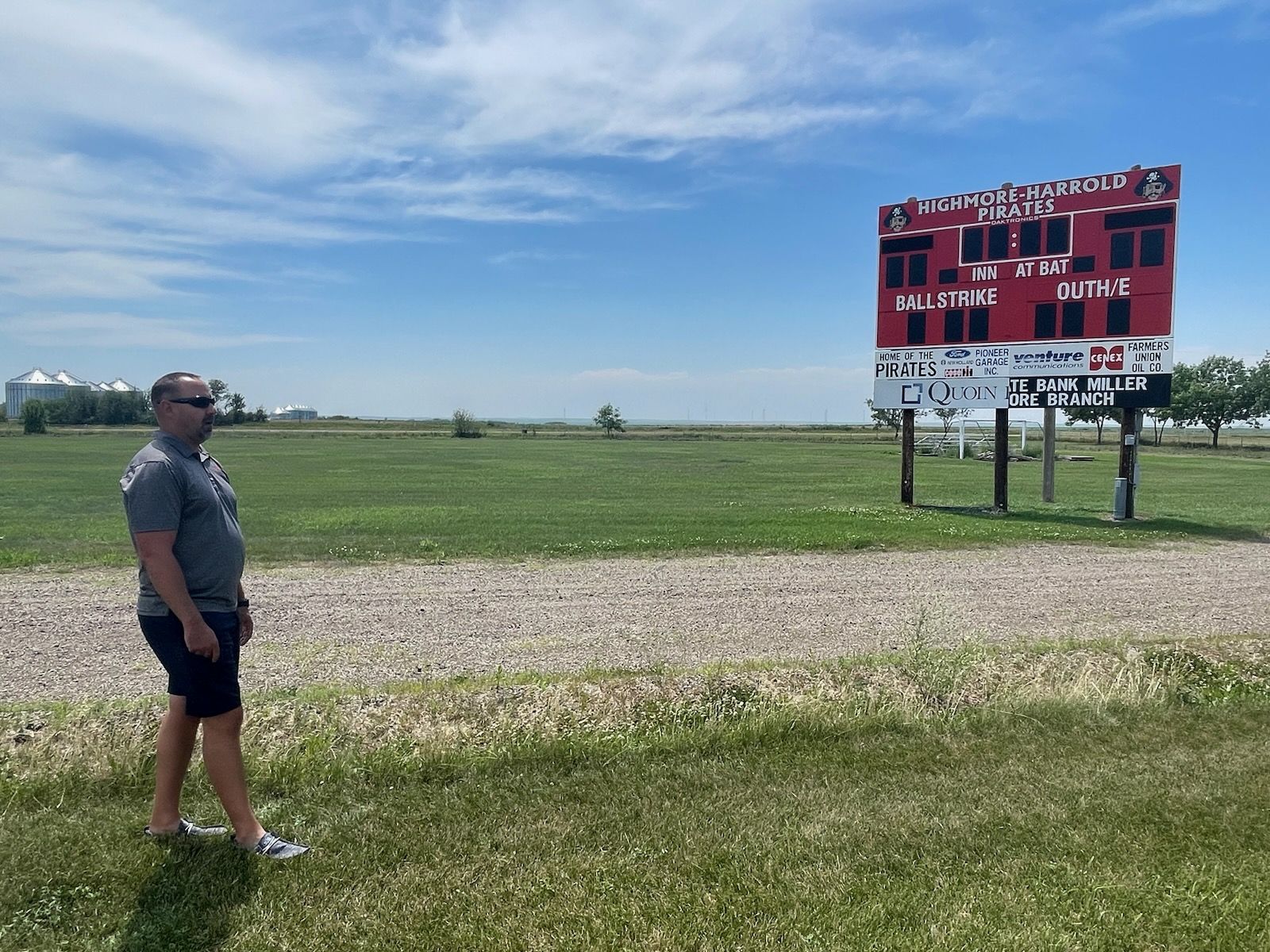
“I played on this field, so I agree it would be cool to have home games again,” said Cermak, scanning the silos and water tower near the complex, where goalposts and scoreboard still stand.
“But at the end of the day, the main thing is to make sure the kids who want to play football have a chance to do that.”
School district largely funded through wind turbines
The football fallout points to a larger problem – dwindling enrollment at Highmore-Harrold that reduces the amount of state aid the district receives, putting staffing and activities at risk.
The school district had a K-12 enrollment of 215 in 2022-23 – down from 250 in 2016-17 – and saw its general fund balance dip to $60,000 following the 2020-21 school year, which Cermak characterized as “extraordinarily low.”
“We were looking at having to reduce offerings at the high school level while still trying to be compliant with South Dakota graduation requirements,” he said.
Property tax revenue from the Triple H Wind Project, an operating wind farm with 92 towers in rural Hyde County, helped save the day. Tax revenue is split between the school district and county, with the district receiving a check for $421,000 in 2022, boosting its general fund to more than $610,000 when combined with federal Coronavirus Aid, Relief, and Economic Security Act dollars.
Like many other rural school districts, however, Highmore-Harrold struggles to hire and retain teachers and support staff, forcing Cermak to “get creative” with existing resources to fill the void.
“When I graduated from college, I was one of 45 applicants for a teaching position, and now schools are lucky to get six or seven applicants,” said Cermak. “With Highmore being rural and somewhat remote, it takes a special person to want to live here.”
$2.4 million raised for new swimming pool
Driving south of the train tracks on Iowa Avenue through Highmore’s business district takes you past the Senior Citizens Center and Chahl’s Bar & Grill until you reach the swimming complex, where construction workers are framing concrete for a new community pool.
The $2.4 million project is a combined effort among the city, county and a nonprofit group of residents. After losing football and baseball, they were concerned to see families taking their kids to Miller or Faulkton for aquatic activities after the Highmore pool fell into disrepair.
The city and county both put forward $500,000, with the county’s portion paid over 10 years and bolstered by wind farm tax revenue. But the project wouldn’t have been possible without a private fundraising effort that raised more than $600,000 in its first year, according to Highmore Mayor Vikki Day.
“They drew a line in the sand,” Day said of the nonprofit group. “They basically said, ‘This (swimming pool) is something we want. We don’t want to see anything else leave.’”
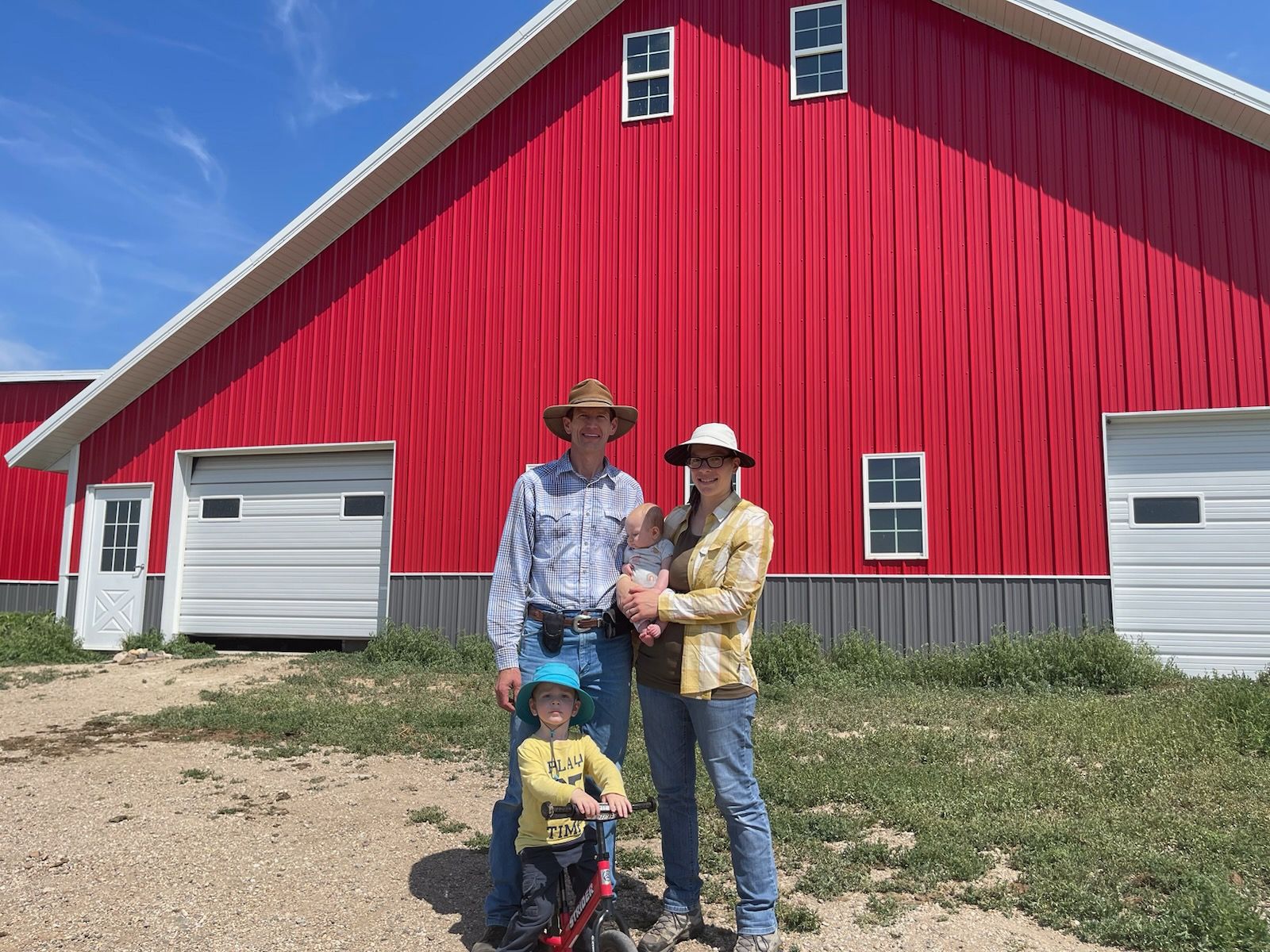
‘We refuse to accept that we’re a dying town’
Maintaining quality of life for families and prospective employees is a constant challenge for business and civic leaders in Highmore, with larger communities nearby.
Hyde County experienced a net migration of minus-37 from 2020-22, meaning fewer people are coming than going.
“We’re an ag based community, and we’re the only town in the county,” said Day. “It’s so easy these days to drive to another town like Pierre or Huron for a different job or groceries. It’s a lot different from when my husband grew up here, when it was a big deal to go to Huron to get Easter clothes.”
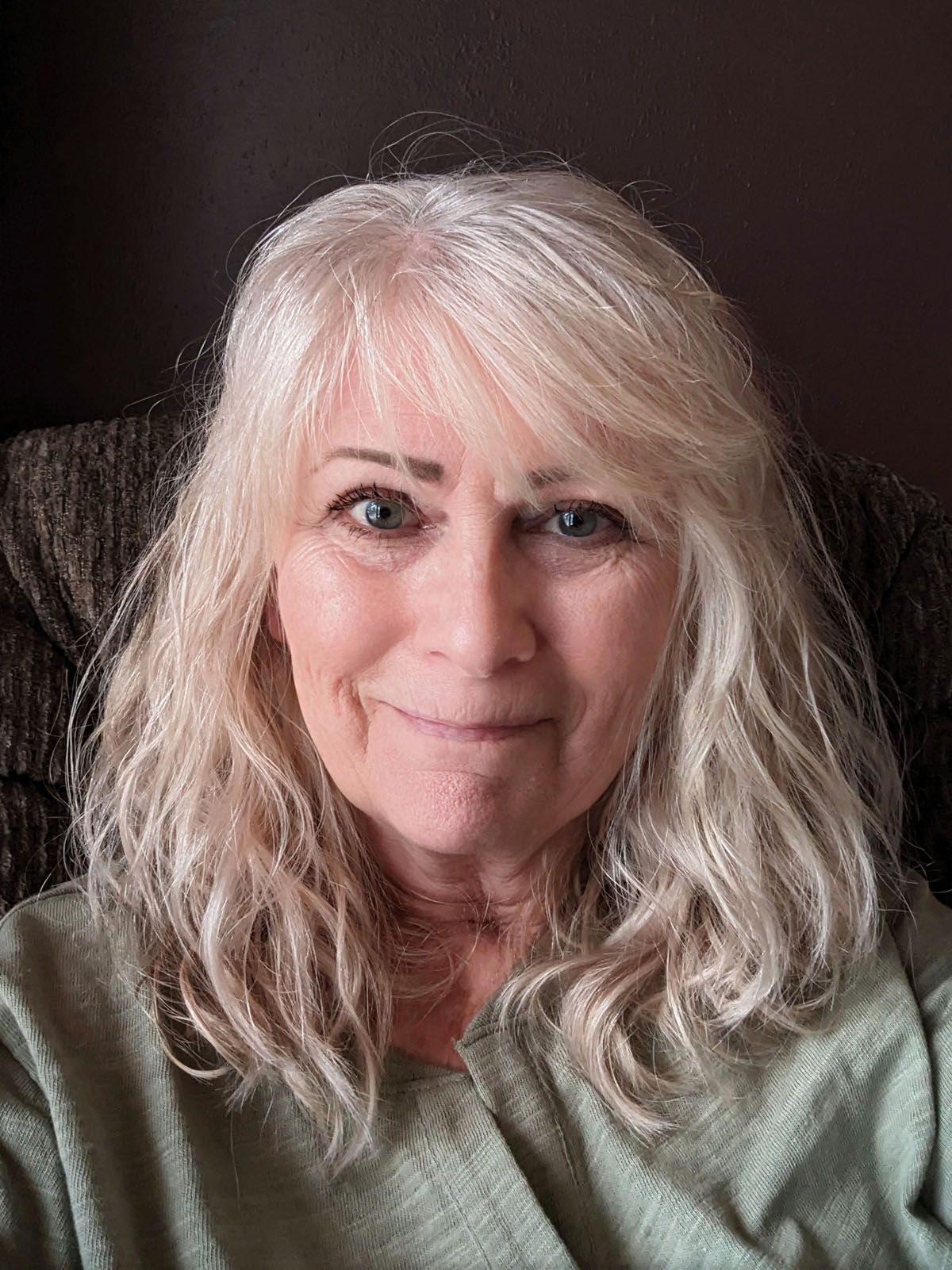
Highmore’s Dollar General opened in April, taking pressure off the Mashek Food Center, which has trouble staffing past the summer when high school kids return to school. For the students who attend college after graduation, the challenge becomes persuading them to return to Highmore to pursue a career and raise a family.
Titan Machinery recruits high school students, seeking prospective sales and machinery workers who will get their tech school paid for if they commit to working for Titan. Venture Communications, another top employer that provides high-speed internet and phone service, has similar incentive programs to get students interested in telecommunications.
Day likes talking about these programs more than the negative headlines garnered from the Ravnsborg crash and other dark days in Highmore, such as the 2008 murder conviction of former police chief Ken Huber, who was found guilty of killing his wife.
“Anytime I come across a news story that deals with that stuff, I just say, ‘I’m not going to let this throw me off,’” said Day. “We’ve got to stay positive and move forward. We refuse to accept that we’re a dying town.”
Twist of fate leads business owner to stay in Highmore
It wasn’t part of Jan Busse’s plan to be here, standing outside his Ford dealership at the nexus of Iowa Avenue and Highway 14, talking about the future of his hometown.
The 74-year-old Highmore High grad earned his civil engineering degree from SDSU and planned to seek a career in engineering, likely far away from Hyde County.
But plans changed.
“My dad’s health went to heck and my brother, who probably would have taken over the dealership, was killed in Vietnam,” said Busse. “My dad asked me, ‘Would you want to take it over?’ And I said, ‘Sure, I’ll buy it from you.’”
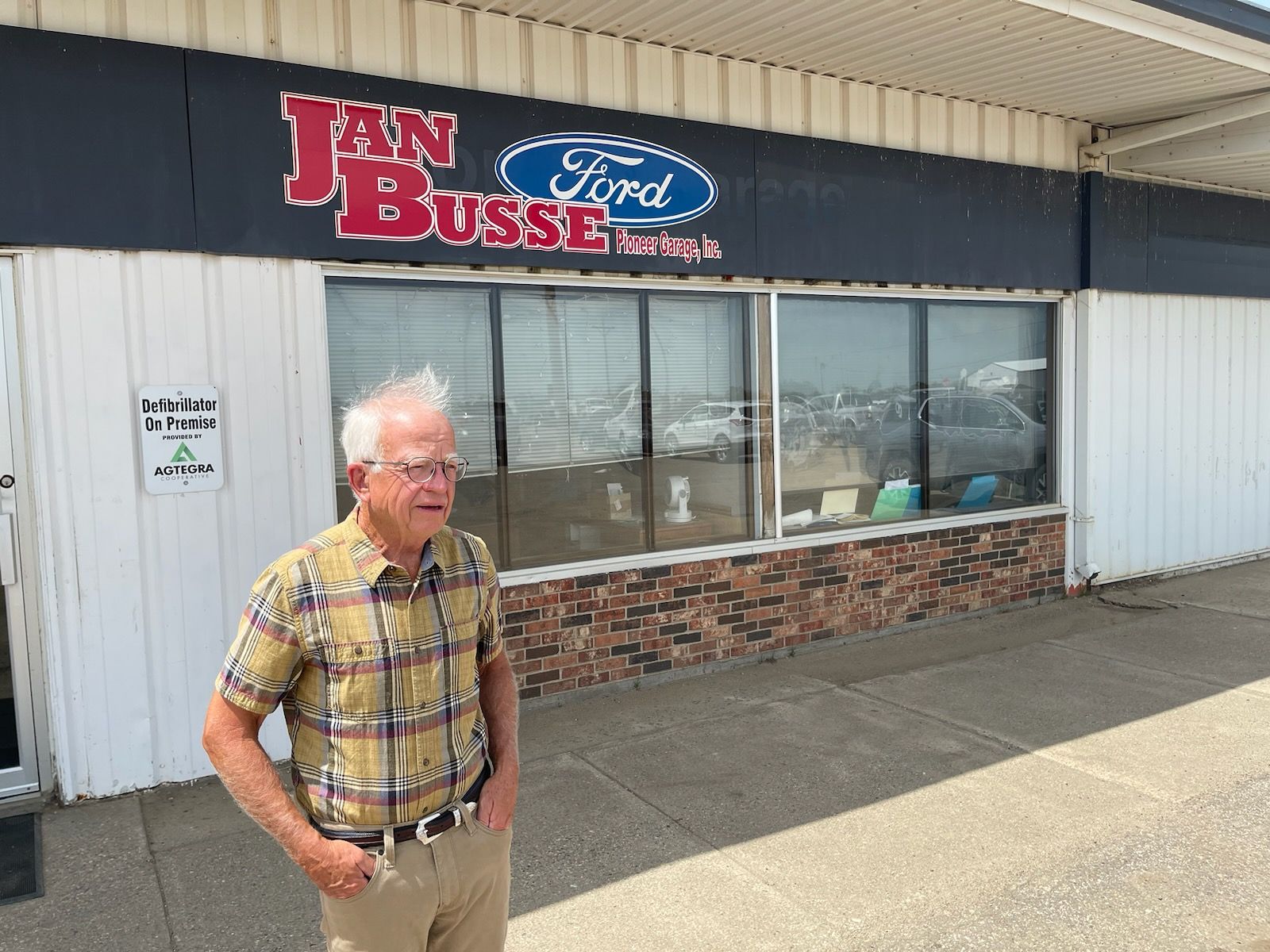
The business, previously known as Pioneer Garage, has been in the family since 1874 and started as a blacksmith shop. Busse took it over in 1972. He also owned an implement shop that he sold to Titan in 2008 on the promise that they would keep it town, which they did, providing more than 20 jobs.
There are 12 employees at Jan Busse Ford, including Jan’s daughter, Danika, and son-in-law, Jesse. They’re both SDSU graduates who returned to Highmore to help run the dealership and raise a family that includes two young daughters.
Busse and his family are active in supporting community outreach such as the Old Settlers’ Car Show, Hyde County Food Pantry and 4-H and Future Farmers of America programs.
“The appearance of the town, the things that it has to offer, is very important,” said Jan.
Jobs are available while housing is not
That means addressing Highmore’s need for housing development, a process that includes condemning old buildings and finding private investors willing to invest in new projects.
“Getting housing is the key to getting people to come here,’ said Busse, who serves as president of the Highmore Housing and Redevelopment Corporation.
“There are businesses with jobs available, but people want to see what the community is about and see if they like it here. Those are things that we’re working on.”
More than 50 years after fate compelled him to stay in Hyde County to raise a family, run a business and plan for the future, Busse has a much different outlook than outside observers.
“I guess I don’t see this as a dying community,” he said. “It’s just home to me. It wasn’t in my plan to be here forever, but I’ve never regretted it.”

